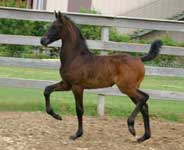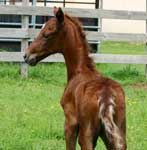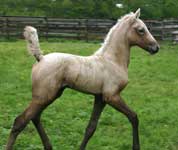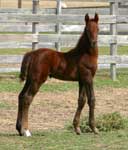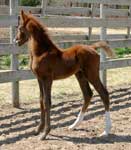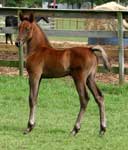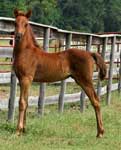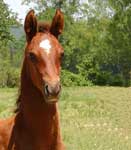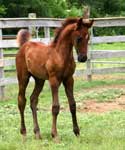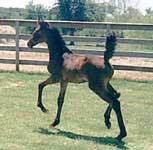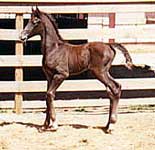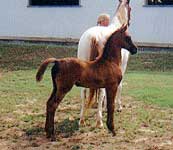-
- (Last
updated 3/3/14)
-
- The
Ever Changing World Of Gray
A explanation
in simple language·
- Gray is NOT a color
but a message to turn the colored hairs white. The older the
animal the greater percentage of white hairs.
The message for the coat to turn gray is of singular dominant
transmission. One parent MUST be gray to get gray. A normal gray
horse will produce 50% gray foals to non-gray mates. A horse
that results from the mating of two gray parents has a 1 in 4
chance of being Homozygous for gray- in simple language 100%
of that horse's foals WILL turn gray. A non-gray resulting from
two gray parents can NOT produce gray.
Roan is roan and Gray is gray. A True Roan is born with a certain
percentage of white hair in their coat- that percentage does
NOT change. A True Roan has few to no white hairs on their head
and legs except for regular type white markings. True Roans are
extremely rare in Saddlebreds The genetic transmission of true
roan is of singular dominant transmission. One parent MUST be
roan to get roan. A normal roan horse will produce 50% roan foals
to non-roan mates.Now what is not nearly as clear cut as gray
is.the horses that appear roan but are not really roan You can
get this roan or some expression of roan from non-roan parents,
this is what is common in Saddlebreds and though they look similar,
this roan often linked with the Sabino gene, a good clue that
you have a Sabino and not a roan or grey is Sabino almost always
have bald faces or wide blazes along with high white socks. So
if your horse has lots of white markings and does not have a
grey parent figure you have a Sabino. Sabino can come in many
discriptions from having only a few roan hairs on the flank to
looking like a normal roan with white hairs all over the body.
They can have minimual white markings like a normal blaze and
white on the lower lip to half white heads and socks to the elbow
and belly spots. The mode of transmission is is still being worked
on. Email me private and I can tell you about horses that carry
this Sabino roan. A gray is born with few to no white hairs in
their coat, and keep you guessing for quite a while. Each time
they shed they have a higher percentage of white hair in their
coat. Look for the tell tail white whisker or eyelash where there
are no actual white markings. Another clue is a smoky or dull
hue to the coat.
-
- Question?
Which Foals are grey
-
- Scroll
to bottom of page for answer
Increasing the chances of a gray foal-
- The non gray partner
can be of any coat color; black, bay, chestnut, golden, buckskin
etc and have no influence on the foal's chances of being gray.
Regular heterozygous gray to non-gray results over a large number
in 50% gray foals. Two regular grays bred together result in
3 foals who are gray and 1 non gray, though there is at present
no test other than test breeding to determine which gray foal
from this cross got the gray gene from both parents and thusly
will only produce gray foals. This foal is referred to as homozygous
and will produce 100% gray foals to non-gray mates.
The non-gray partner only has influence of the hue or appearance
of the gray color while the horse is maturing. Not all grays
turn gray at the same rate. Some appear light gray very early
and are clearly gray as weanlings. Others will gray very slowly,
as did Hi Octane who showed no tendency to gray until he was
a yearling, and was registered as a chestnut. Ultimately they
all go from a roan appearance of varying degrees, to the classic
dapple that every one thinks of as gray (usually the ones who
gray early enter this phase at 3-4 years and gradually turn white
or flea bitten by 7-9years old). The slower to turn grays enter
this phase at 5-6 years (as did Hi Octane) and gradually turn
white or flea bitten by 12-14 years old. Old gray horses appear
to be dark skinned white horses when seen from a distance.
Mane and tail color are dictated by the real color of the horse.
The horse who would have been Golden had it not turned gray will
have a pure white mane and tail. The horse that would have been
black or bay will have a black mane and tail that very gradually
gets lighter over time, and the chestnut horses will vary from
white to black depending upon weather in a non gray state they
would have been bright red chestnut with flax mane and tails
or a dark liver with a matching darker mane and tail.
So you might have some idea if coat color or your foal should
it not turn gray, Hi Octane would have been a liver chestnut,
had he not turned gray.
-
- Below
we exhibit several gray horses from year of birth to maturity
- Winsdown
Hi Octane-- slow color change
-
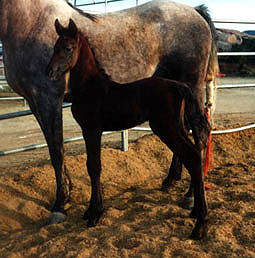
- At 3 days
-
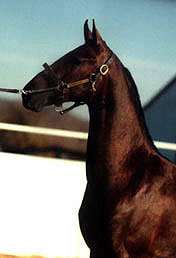
- As a yearling
-
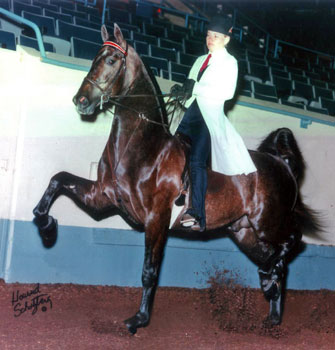
- At 2 years--Photo by Howie
-
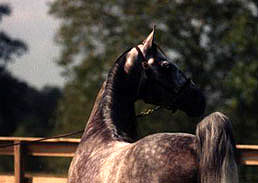
- At 7 years
-
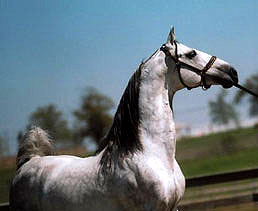
- At 11 years
-
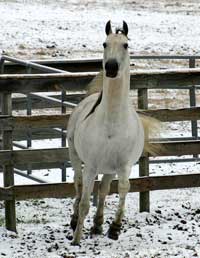
- At 14 Years in
the Winter of 2006
-
- Winsdown
Carnegie- average color change
-
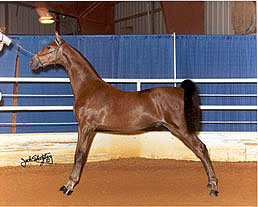
- At 6 months old
-
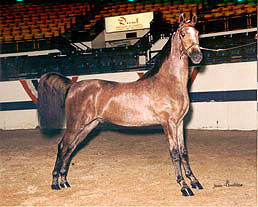
- As A Yearling
-
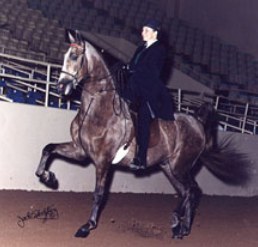
- At 2 years old
-- Photo
by Jack Schatzberg
-
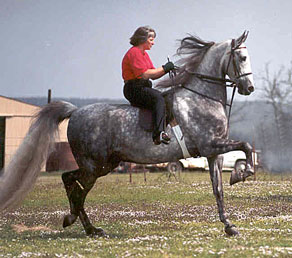
- At 5 Years Old--
- Winsdown
Vulcan Steel-- rapid color change
-
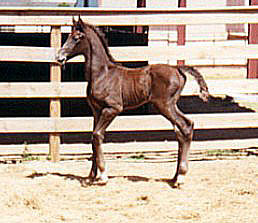
- At 2 weeks old-
-
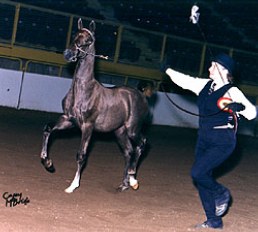
- At 5 months old-- Photo by Casey McBride
-
-
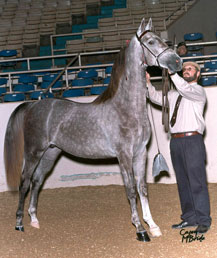
- As a Yearling--
Photo
by Casey McBride
-
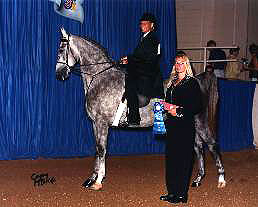
- As a 2 Year Old-- Photo by Casey McBride
-
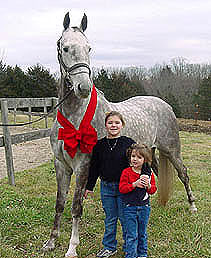
- Fully gray st 4
years old
- Answer
to question: ALL
|
